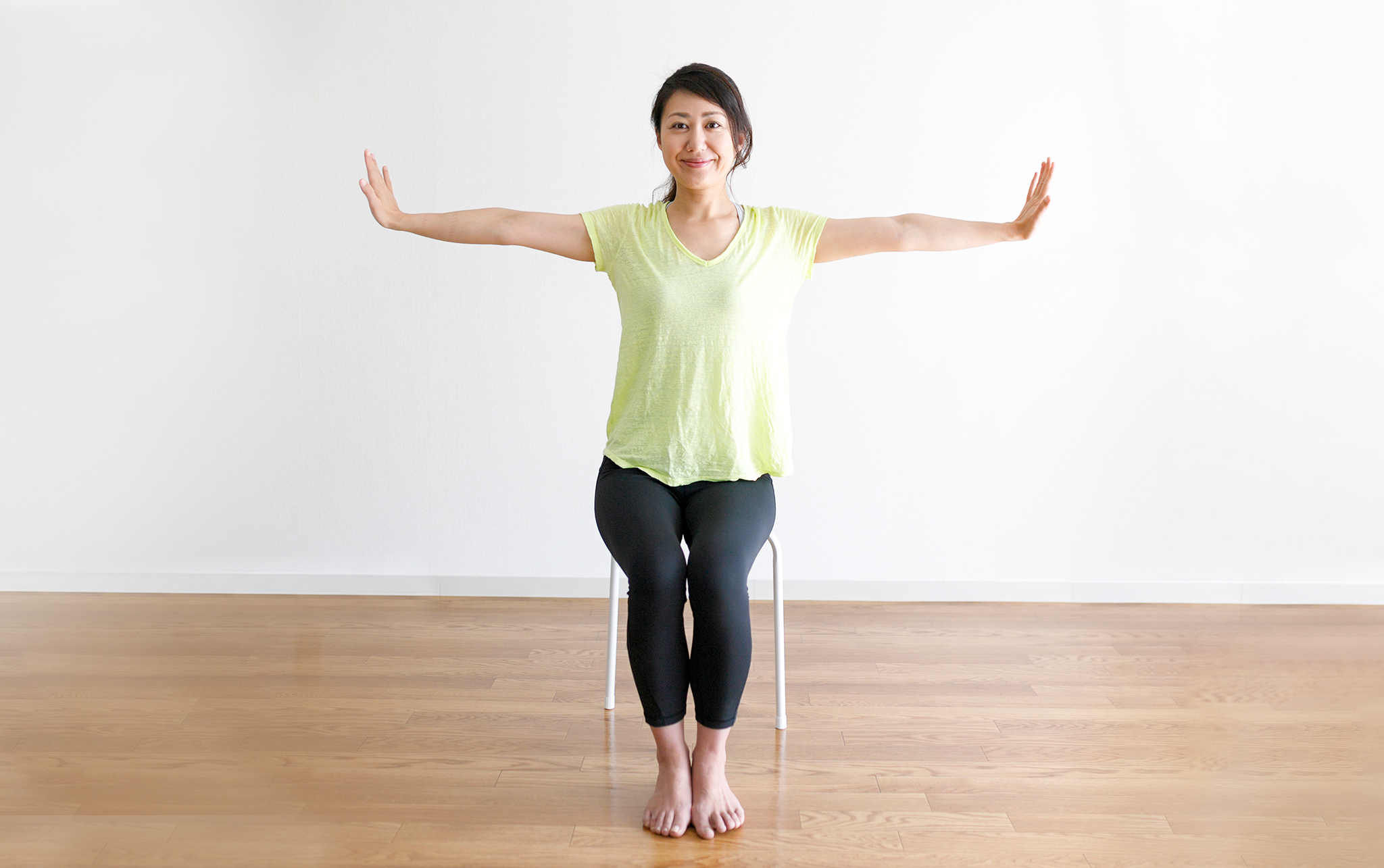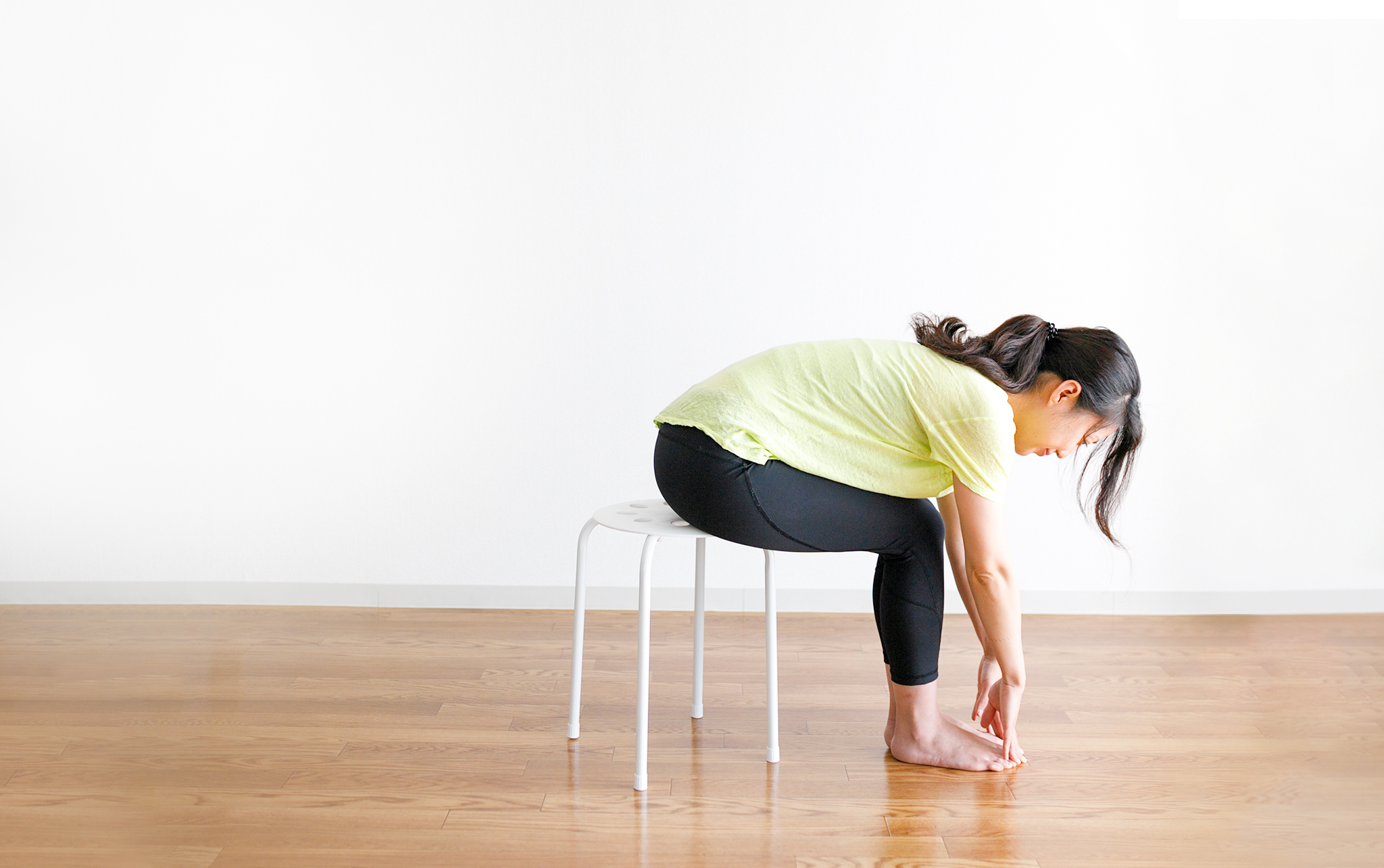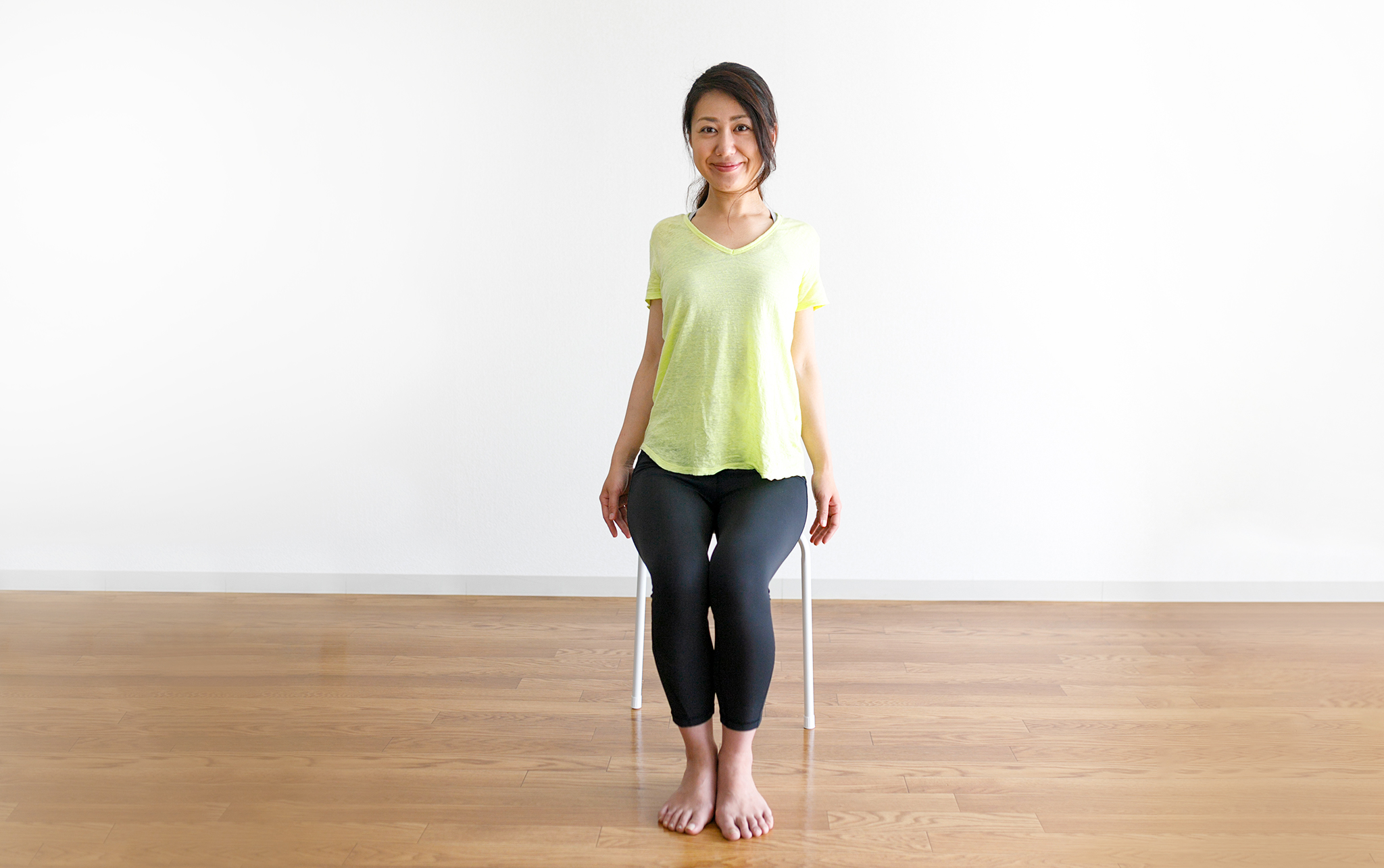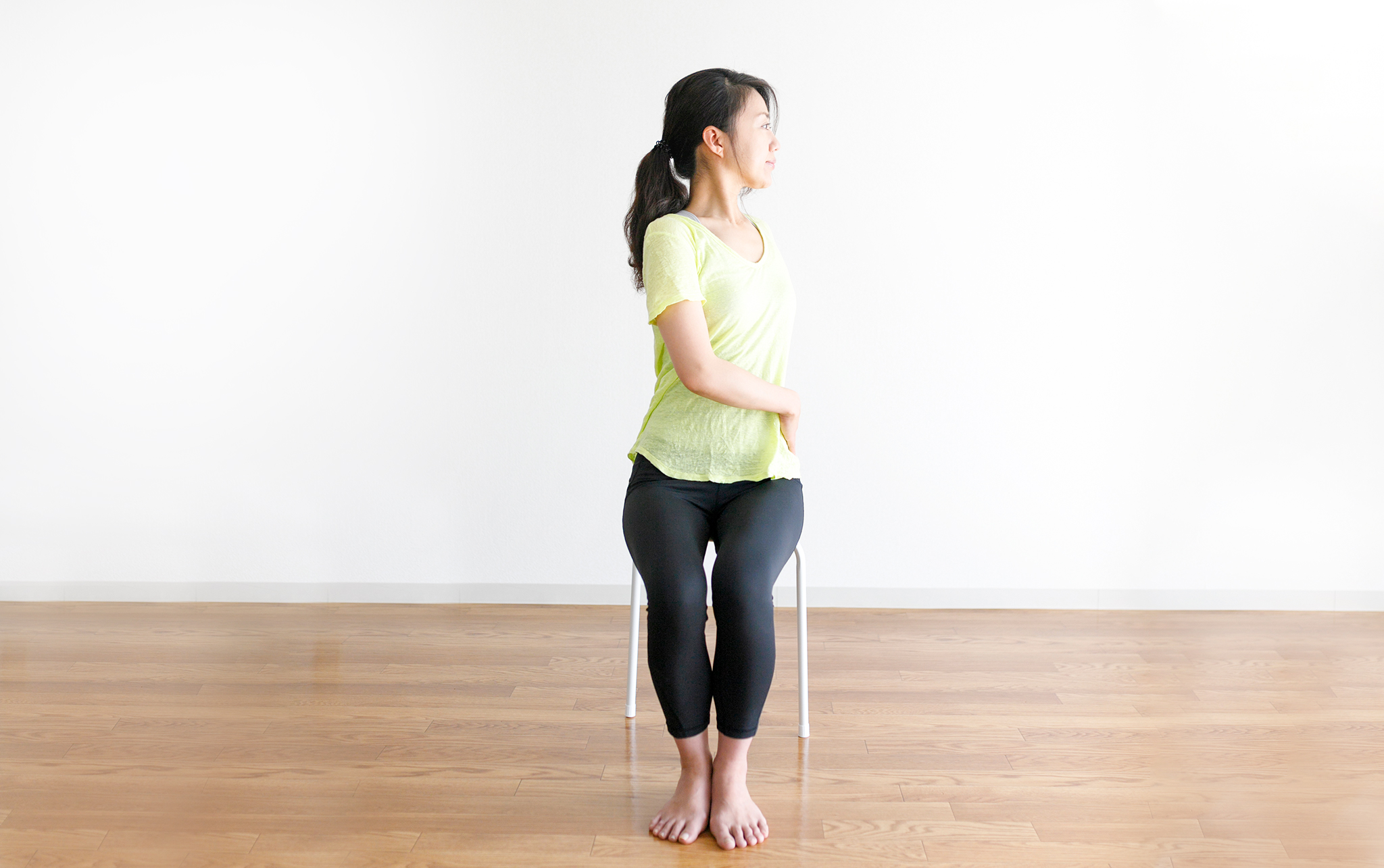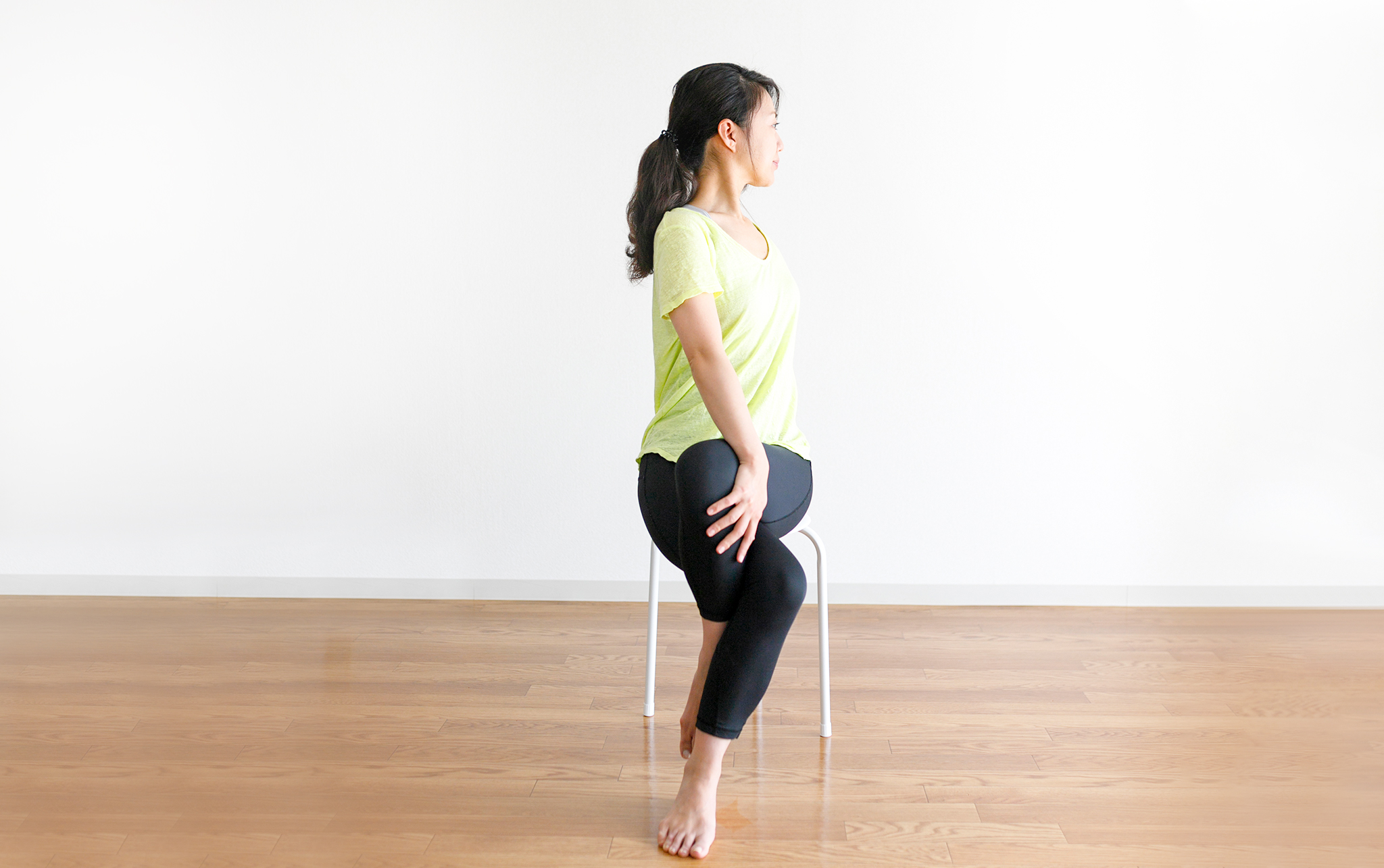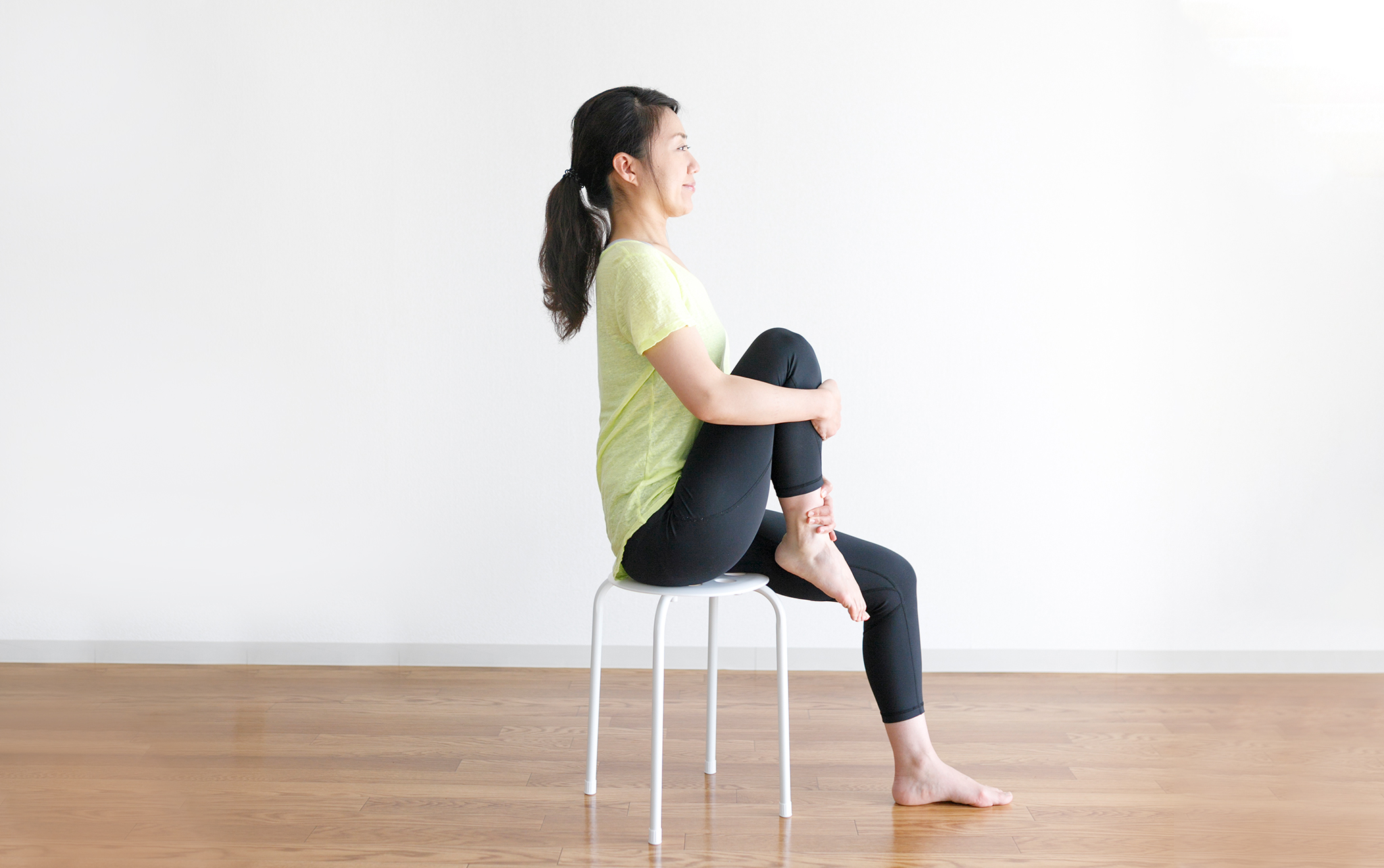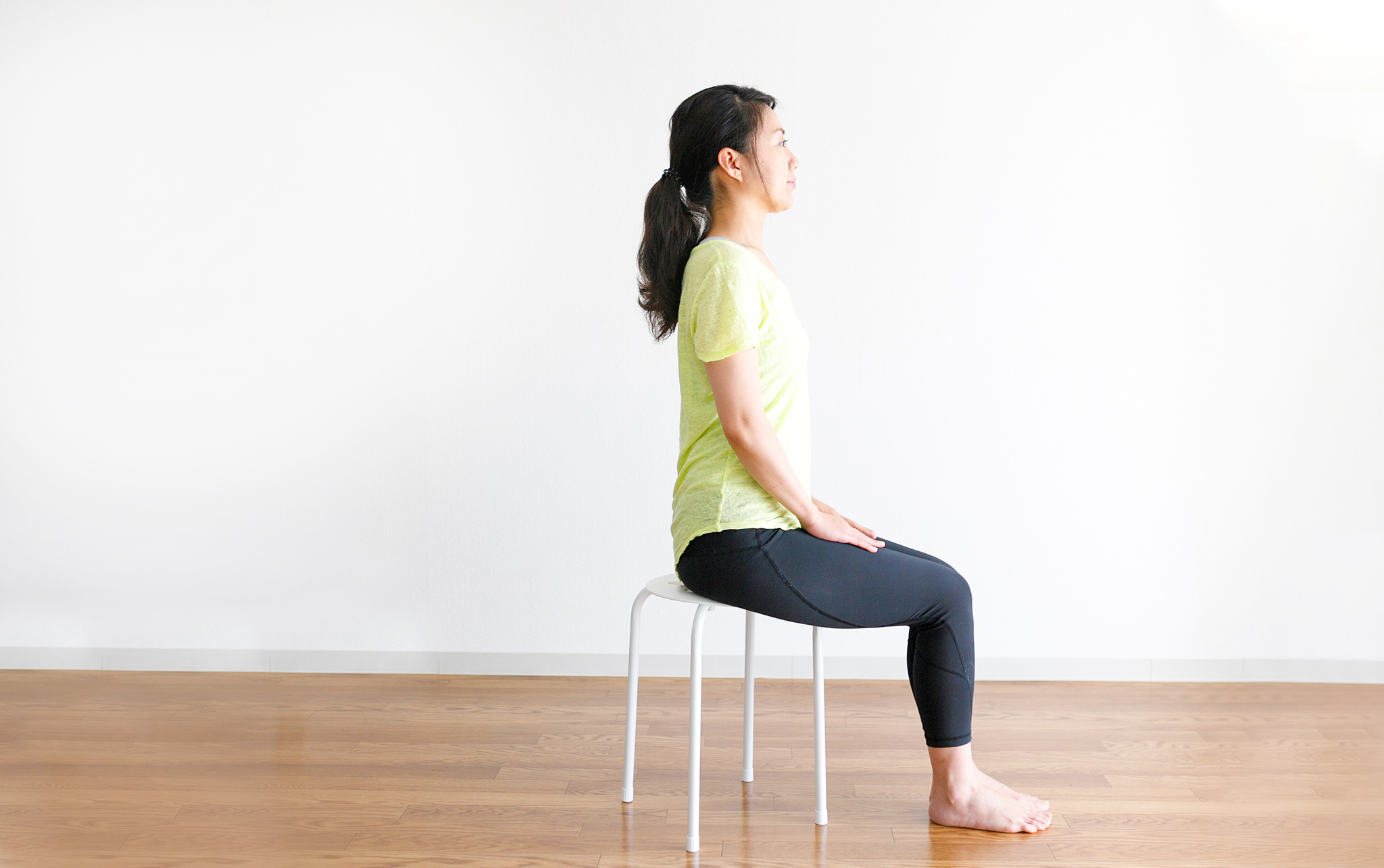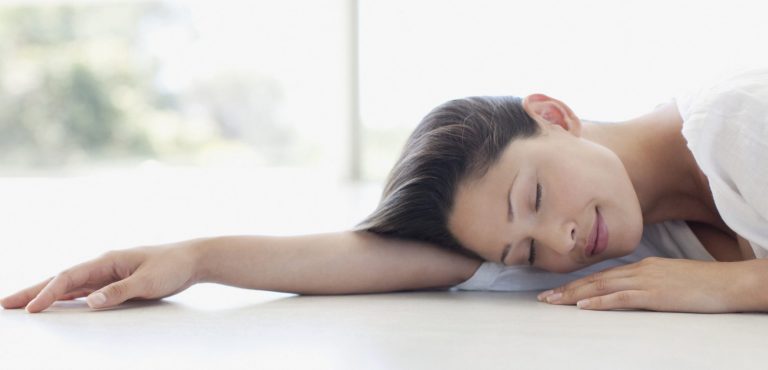Many of us, when we think of yoga, imagine standing up straight as a peacock on a mat with one leg flung up in the air whilst balancing on the other… Or something alike… But what if you could do many of the amazing yoga poses without moving out of your chair? Here comes the great news- you can!
Chair yoga is a new branch of the practice, adapted so the exercises can be done while seated in a chair. This means that those for whom standing may be challenging, or those with compromised mobility, don’t have to miss out on all the yoga benefits. Also, if you spend long hours sat in the office chair, you can sneak in some bodywork without getting into trouble with your colleagues!
So, whether you have restricted mobility or are simply looking to improve your posture and flexibility without the need to stand, chair yoga may be just for you!
Seated chair yoga poses
Begin each posture seated on a chair, with your spine long and straight, both feet flat on the floor, letting your hands rest on top of your knees or thighs.
Mountain pose – Tadasana
- Take a deep breath and on an exhale, root your bodyweight into the chair using your sit bones.
- On the next exhale, roll your shoulders down your back, pull your belly button towards your spine and bring your arms to your sides, opening up your chest.
As the name suggests, this is the mountaintop of all yoga poses. It engages your core and allows you to check in with your posture, as well as bringing your attention back to the breath. It is great to come back to this pose in-between all of the postures below.
Forward bend –Uttanasana
- Take a deep breath and as you exhale, drop your body weight down, coming into a forward bend over the legs. If your hands reach the floor, rest them there. Let your head hang down with the rest of your body.
- On an inhalation, raise your arms up over your head.
- Repeat this movement several times, making sure each time you move from forward bend to raised arms, it is done with accordance with the breath.
This simple posture calms the brain and helps relieve stress, as well as reducing fatigue and anxiety. It is also a great one for those wanting to improve their digestion, relieve headaches and improve sleep quality.
Cat-cow stretch – Bitilasana Marjariasana
- On an inhale, arch your spine and roll your shoulders down and back, tucking your shoulder blades into your back (cow).
- As you exhale, round your spine and tuck your chin into your chest. Your head and shoulders should come forward (cat).
- Continue moving from cow to cat for several breath cycles.
This exercise activates the adrenal glands as well as the pancreas and keeps your reproductive organs fit. It is particularly useful at improving digestion and helping with premenstrual symptoms.
Spinal twist – Parivrtta Sukhasana
- On an inhale, extend your spine while raising your arms up and out to your sides.
- On an exhale, use the strength of your upper body to gently twist to your right and lower your arms. You can place your right hand on the back of the chair to deepen the twist (doing so very gently), whilst resting your left hand at your side.
- Look over your right shoulder and keep taking deep breaths.
- After a few breath cycles, return to face the front and repeat these steps twisting on your left side.
Twisting exercises are sometimes referred to as detox poses, as they’re great at aiding digestion and circulation. They can also help with lower back pain.
Chair eagle – Garudasana
- Cross your right thigh over your left thigh. Wrap your right foot around the left calf if you can.
- Cross your left arm over the right at the elbow, bending your elbow and bringing your palms to touch.
- Simultaneously raise the elbows and drop your shoulders away from the ears. Hold the pose for a few breath cycles.
- Then, repeat on the other side.
This pose is great at improving concentration and sense of balance, as well as strengthening and stretching the ankles, calves, thighs, hips, shoulders and upper back.
Chair pigeon – Eka Pada Rajakapotasana
- Bring your right ankle to rest on your left thigh. Aim to keep your knee and ankle in line as much as possible. Hold this pose for a few breath cycles.
- If this feels comfortable, you can perform a forward bend to intensify the stretch.
- Then, repeat with your left ankle over your right thigh.
The pigeon pose relieves lower back pain, increases circulation to urinary, digestive, and reproductive systems, and is thought to control sexual desire.
Final relaxation – Savasana
Take a few moments to sit still with your eyes closed, hands in your lap. Take this time to feel the energy flow in your body and thank yourself for the effort and goodness that you have gifted yourself with the exercises. Then, gently open your eyes and continue on with your day.
Who can practice chair yoga?
It doesn’t matter whether you are young or old, big or small, fit & healthy or with some mobility restrictions..., almost anyone can engage in chair yoga exercises.
However, for people suffering from osteoporosis – a condition which weakens the bone structure – certain chair yoga postures should be avoided to reduce the risk of injury:
Movements which require spinal flexion (as in the forward bend) and rotation (like in the spinal twist) can be harmful for people with this condition. Simply skip these out of your routine and perform any of the remaining postures!


